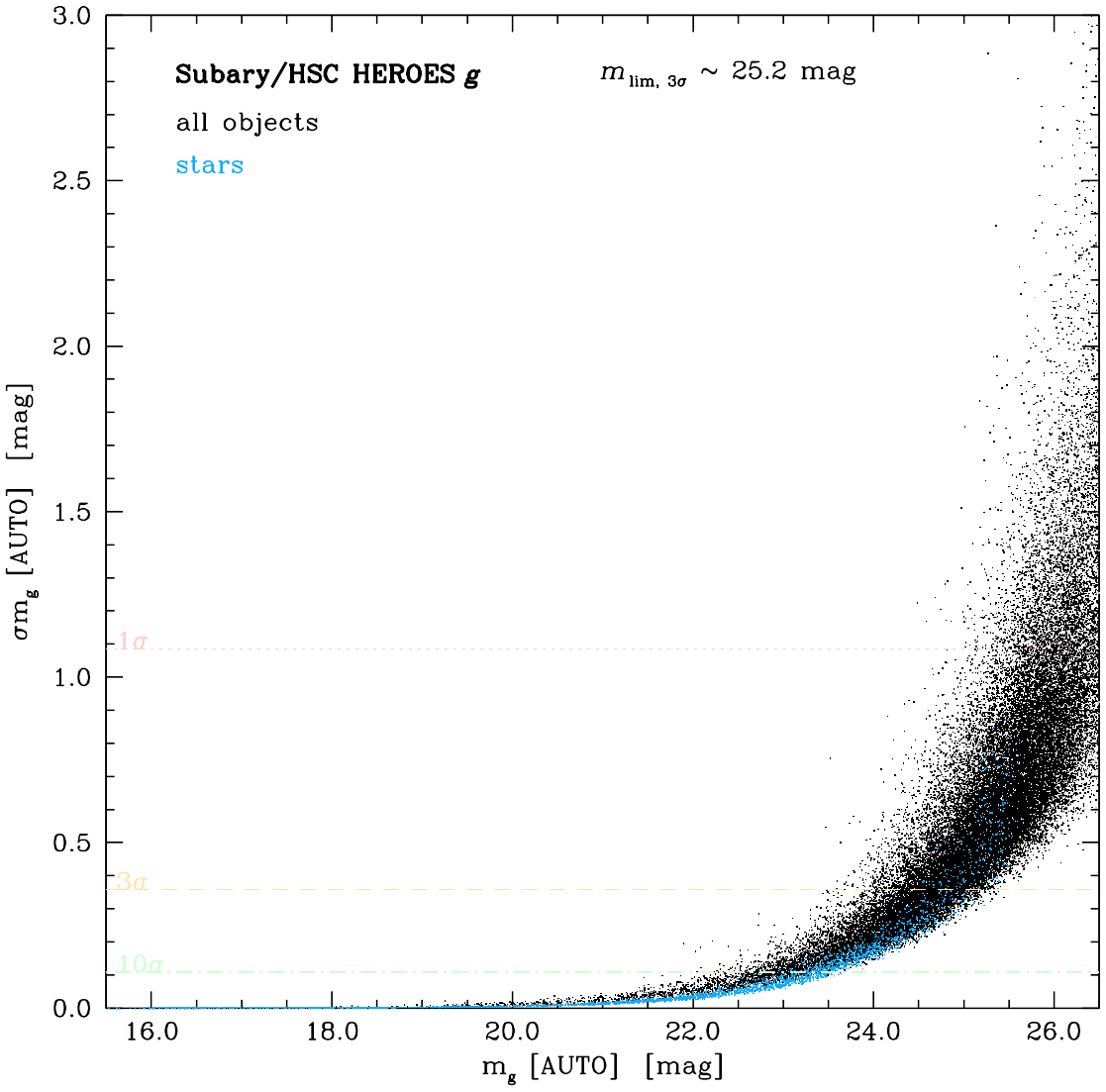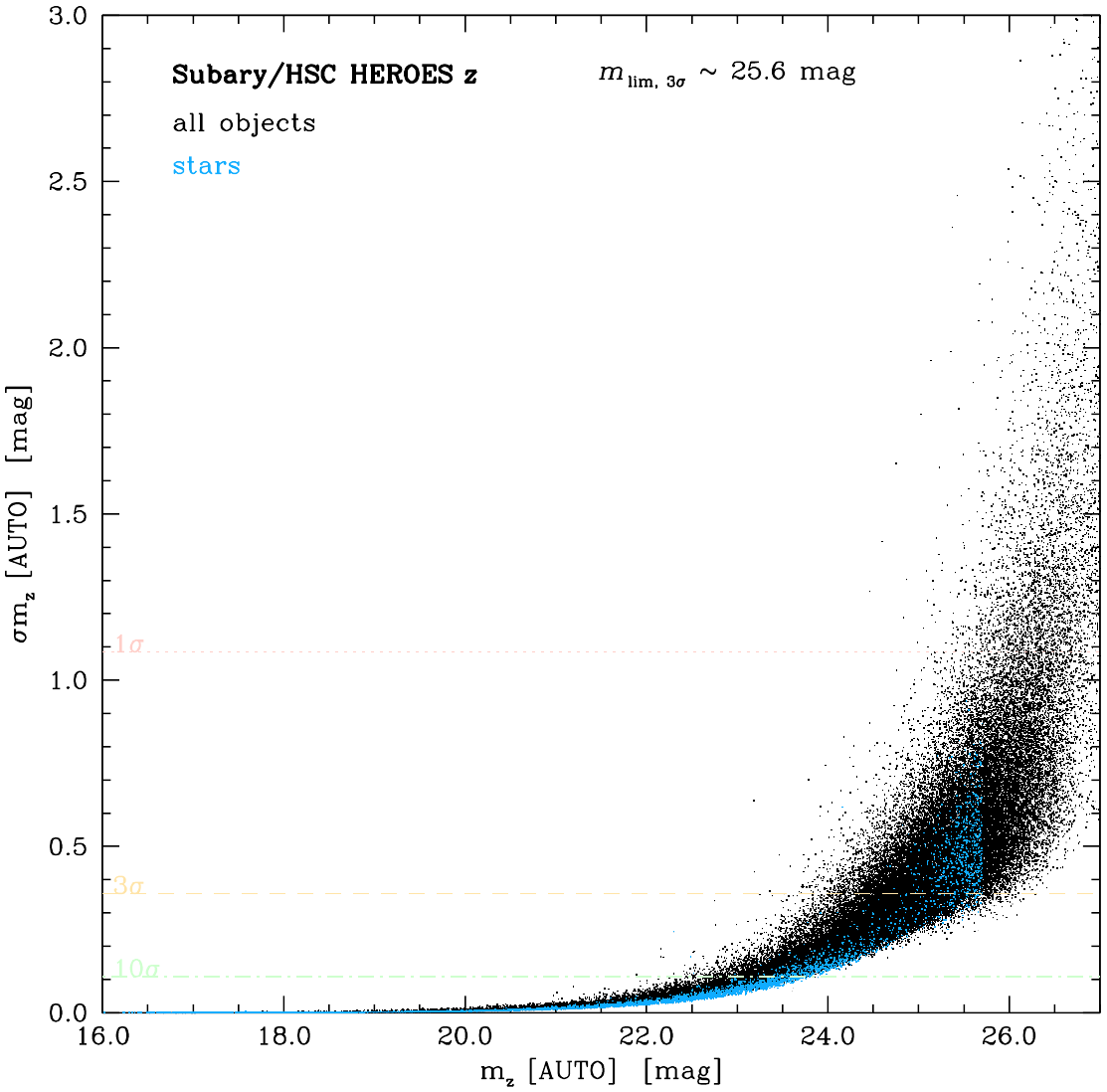The larger area surrounding the JWST NEP Time-Domain Field proper was imaged with Subaru/Hyper Suprime-Cam (HSC) as part of the Hawaii EROsita Ecliptic pole Survey (HEROES; PI: G. Hasinger & E. Hu) in g, i2, z, and two narrow-band filters (NB816 and NB921). The JWST NEP Time-Domain Field centered at (RA, Dec)J2000 = (17:22:47.896, +65:49:21.54) is located near the Western edge of the overall HEROES footprint, and outside of the area that also has HEROES U and Y coverage from the Canada-France-Hawaii Telescope (CFHT).
Gunther Hasinger reported at the JNEP virtual workshop on Dec 2 2021 limiting magnitudes in the 26.5–24.5 mag range in g, i2, and z, and a median seeing in all bands of ~0.6 arcsec.
Satoshi Kikuta <kikutast@ccs.tsukuba.ac.jp> downloaded the available Subaru/HSC exposures once they became public early-2020, and created astrometrically and photometrically aligned mosaics in each of the bandpasses in March 2020, with zeropoint magnitudes set to 0.00 mag and a plate scale of 0.168 "/pix. The astrometry may still show some residuals with respect to Gaia EDR3, but likely more than suffices for object identification at other wavelengths.
The following 11,000✕12,000 pixel mosaics (flat FITS files) are available, each ~504 MB in size:
- SubaruHSC_G_kikuta.fits
- SubaruHSC_I_kikuta.fits
- SubaruHSC_Z_kikuta.fits
- SubaruHSC_NB816_kikuta.fits
- SubaruHSC_NB921_kikuta.fits
A preliminary, unvetted, merged g, i, z Source Extractor catalog that used a straight sum of the three broad-band mosaics above as the detection image, is available here [83 MB; ASCII_HEAD format; last updated dd. Feb 16 2022 with photometric uncertainties that appear to make sense, using GAIN = 1.0/(RMS2)]. The table header also includes the details on how this catalog was produced. The median seeing in g was found to be ~0.8", that in i and z ~0.5"–0.6". Compact sources brighter than m ~ 17, 17.5, and 17.5 mag in g, i, and z saturate. One can use SDSS or PanSTARRS photometry to recover brighter sources.



When using these data in publications, please include Satoshi Kikuta as a co-author, and cite the HEROES survey and paper(s), and include appropriate acknowledgements to the Subaru telescope and HyperSuprimCam instrument:
- HEROES — UH Large Collaborative Program: G. Hasinger (PI), A. Barger, E.Hu, M. Takamiya, R. Sunyaev, A. Cowie, R. Griffiths, L. Cowie, & C. McPartland
- For acknowledgment of the Subaru Telescope, please refer to the Publishing Results from Subaru page
- For acknowledgement of Subaru instruments, see: this link and cite: Miyazaki, S. et al. 2018, 'Hyper Suprime-Cam: System design and verification of image quality', PASJ 70, S1